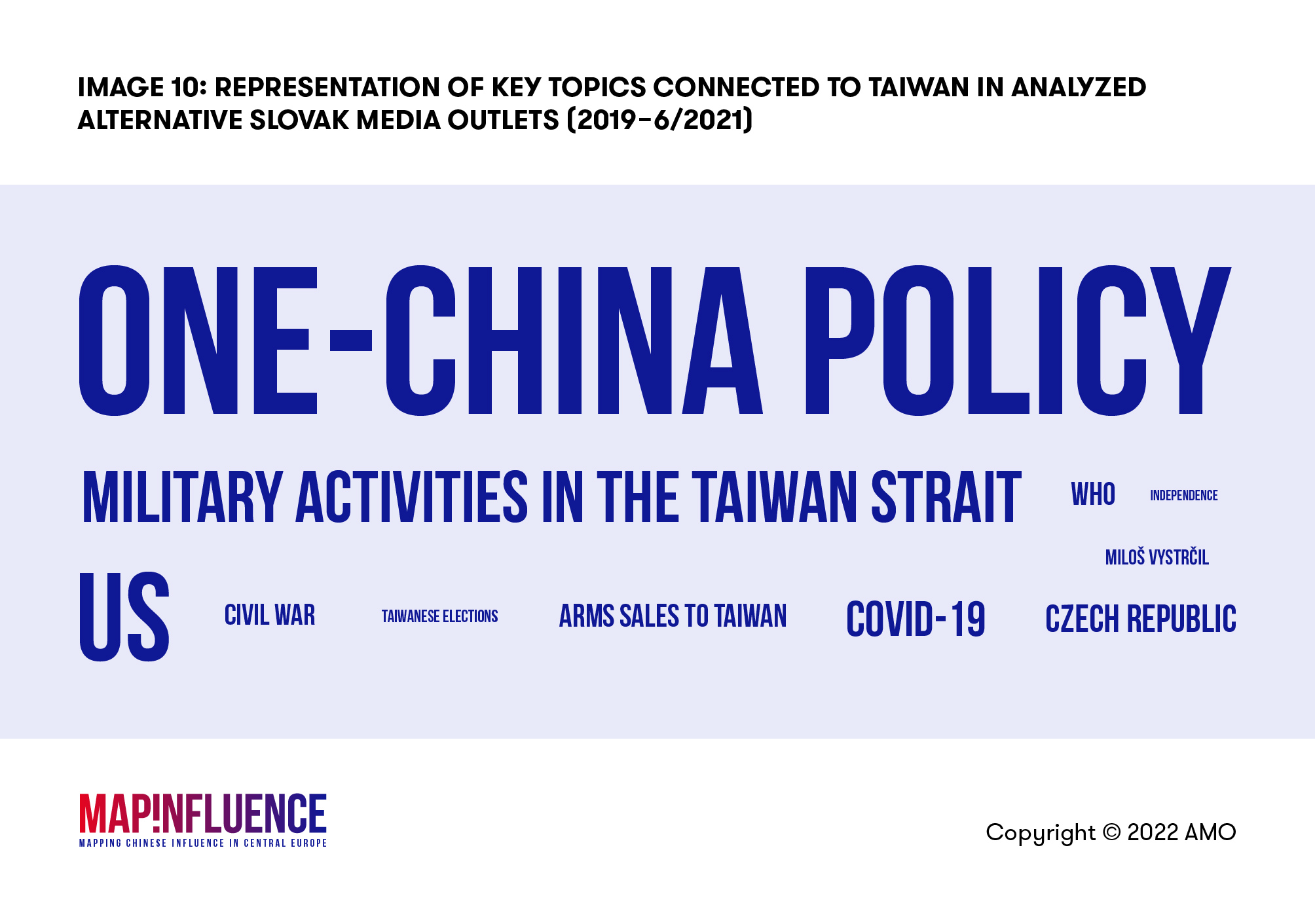Analysis of China-Related Issues in Slovak Alternative Media
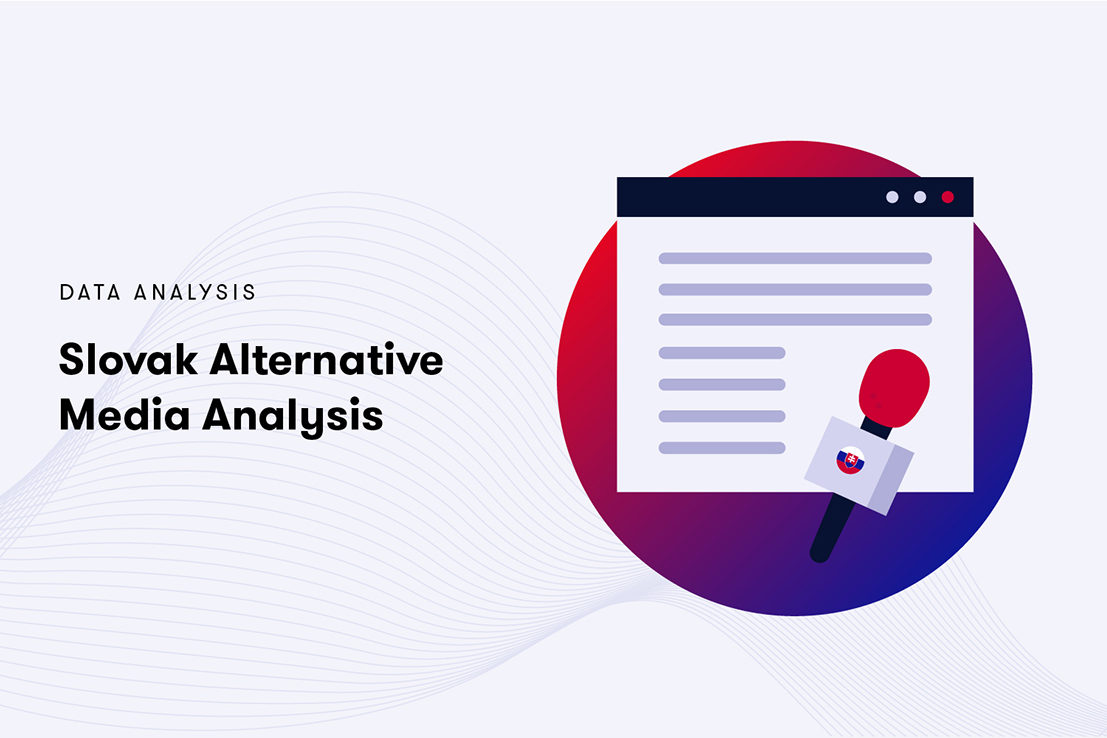
The latest MapInfluenCE research project combines a detailed and years-long effort to map Chinese narratives in traditional media with specific knowledge of the Slovak alternative media environments. As such, the research contributes to the understanding of the confluence of China and Russia and their narratives in the information space in the region.
MapInfluenCE analysts have examined the depiction of China-related narratives on five specific topics (5G, Chinese investment, Hong Kong protests, Xinjiang, and Taiwan) in three Slovak alternative media – Hlavné správy, Hlavný denník, and Infovojna.
The following infographics are based on a detailed content analysis of the dataset consisting of 815 articles published by the alternative media outlets in the period from January 2019 to June 2021.
Download the full paper here to get access to all the results of the study and the associated data.
When it comes to the particular content of the articles focusing on 5G, the analyzed media outlets mainly focused on the following sub-themes: restrictions on ZTE and Huawei, conflict dynamic between China and the US, as well as allegations of data collection and espionage by Chinese companies. Quite frequently, alternative media outlets were spreading narratives about 5G being used by the US to put pressure on China. The topic was therefore a part of the broader anti-Western narrative that conforms to prior criticism of the US, Germany, United Kingdom, and other western countries that have adopted restrictions against Chinese technology companies. At the same time, the narrative served as a means for glorifying China and partly Russia in the case of the announced cooperation of both countries in building 5G infrastructure.
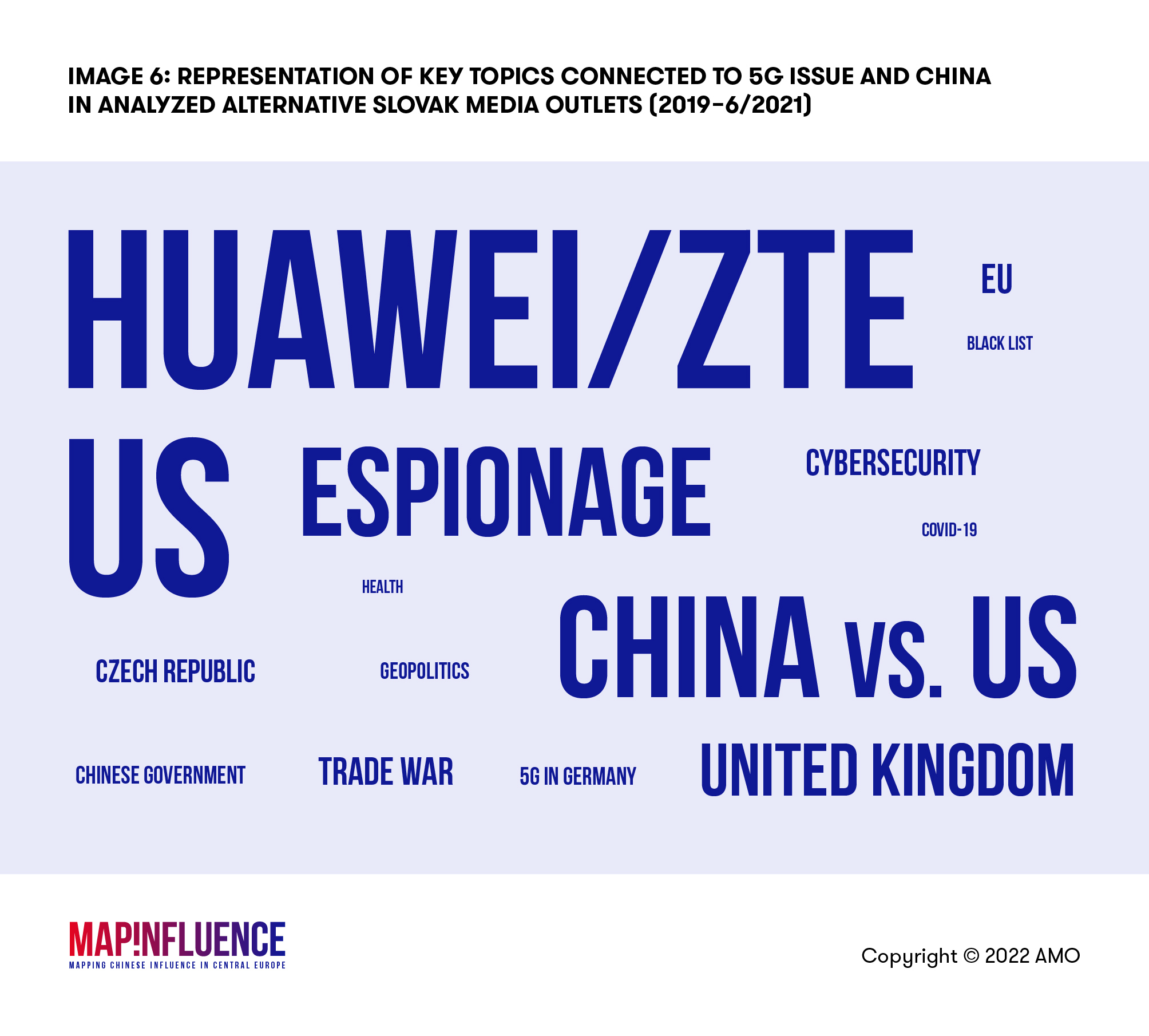
Interestingly, in the discussion of Chinese investment in Slovakia, the analyzed media omitted the issue of CEFC investment despite its close links to Slovakia. In comparison, the issue of CEFC was covered more by the Czech alternative media. Significantly larger shares of articles adopted an international perspective, covering topics related to the US and Sino-American trade war, relations with Russia, relations with the EU, and infrastructure investment.
Articles based upon Russian sources (e.g. Russia Today, Sputnik, or TASS agency) often discussed the relationship between Russia and China, describing them as mutually beneficial and as a counterweight to the Western liberal world order.
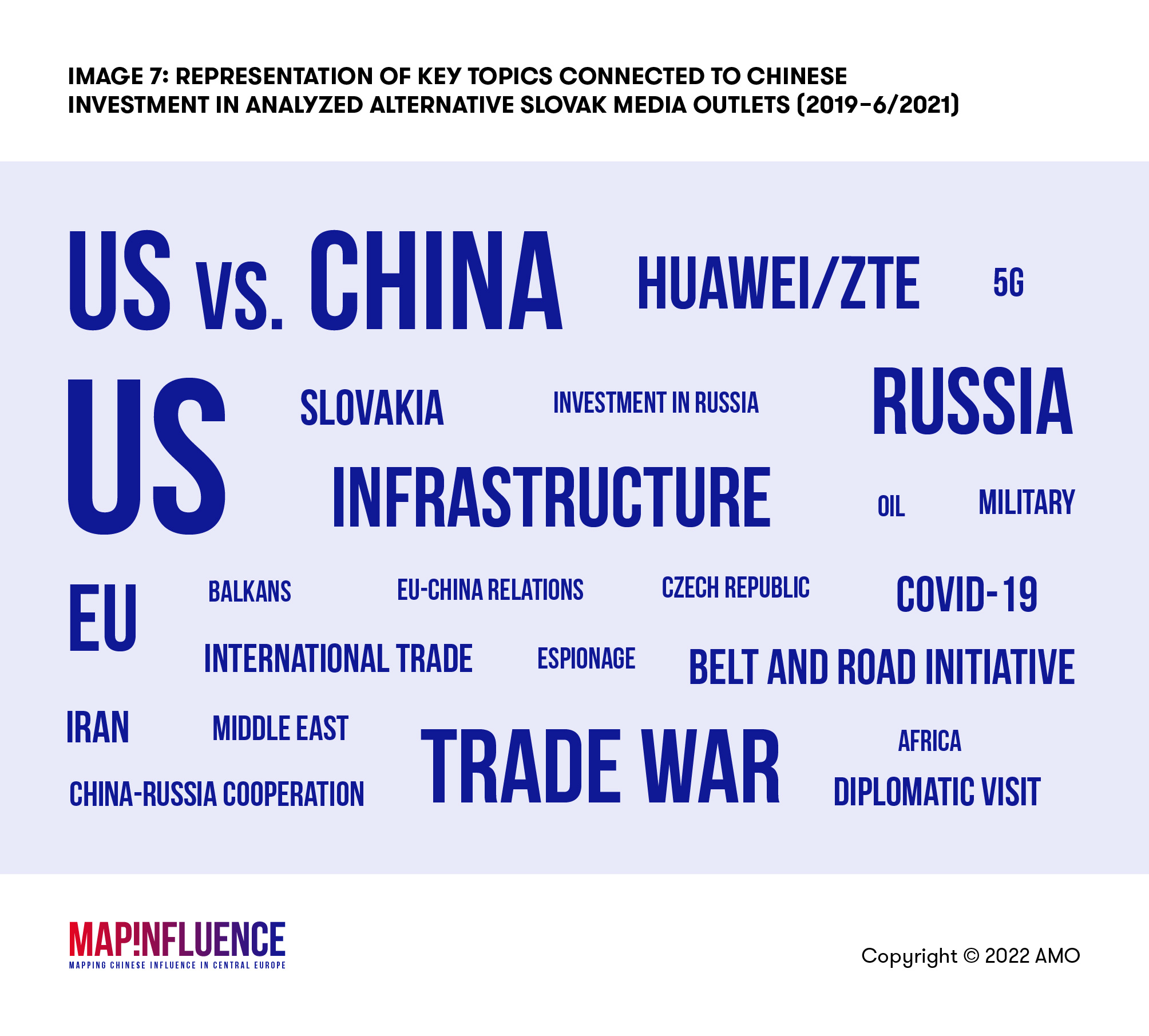
Protests were clearly a key topic in the monitored period as they spread in Hong Kong after the announcement of a proposal to change Hong Kong’s extradition law. Beijing’s positions which appeared in the alternative media were staunch objections to the interference of “external forces” in China’s internal affairs. Similar statements were directed mainly at the US and the United Kingdom, and later, after the suspension of extradition treaties, also against Canada, Australia, and Germany. More problematic narratives were spread in connection with the US, especially when Russia also entered into the conversation.
In essence, MapInfluenCE research into alternative Slovak media reporting on Hong Kong discovered a strong meta-narrative of the “color revolution,” followed by dubious comparisons to the Ukrainian Maidan protests and the rhetoric of foreign forces influencing public opinion and directing the protests themselves. This was also the case of the Czech alternative media reporting. Protests were often described as an instrument of a hybrid war waged against the Chinese regime.
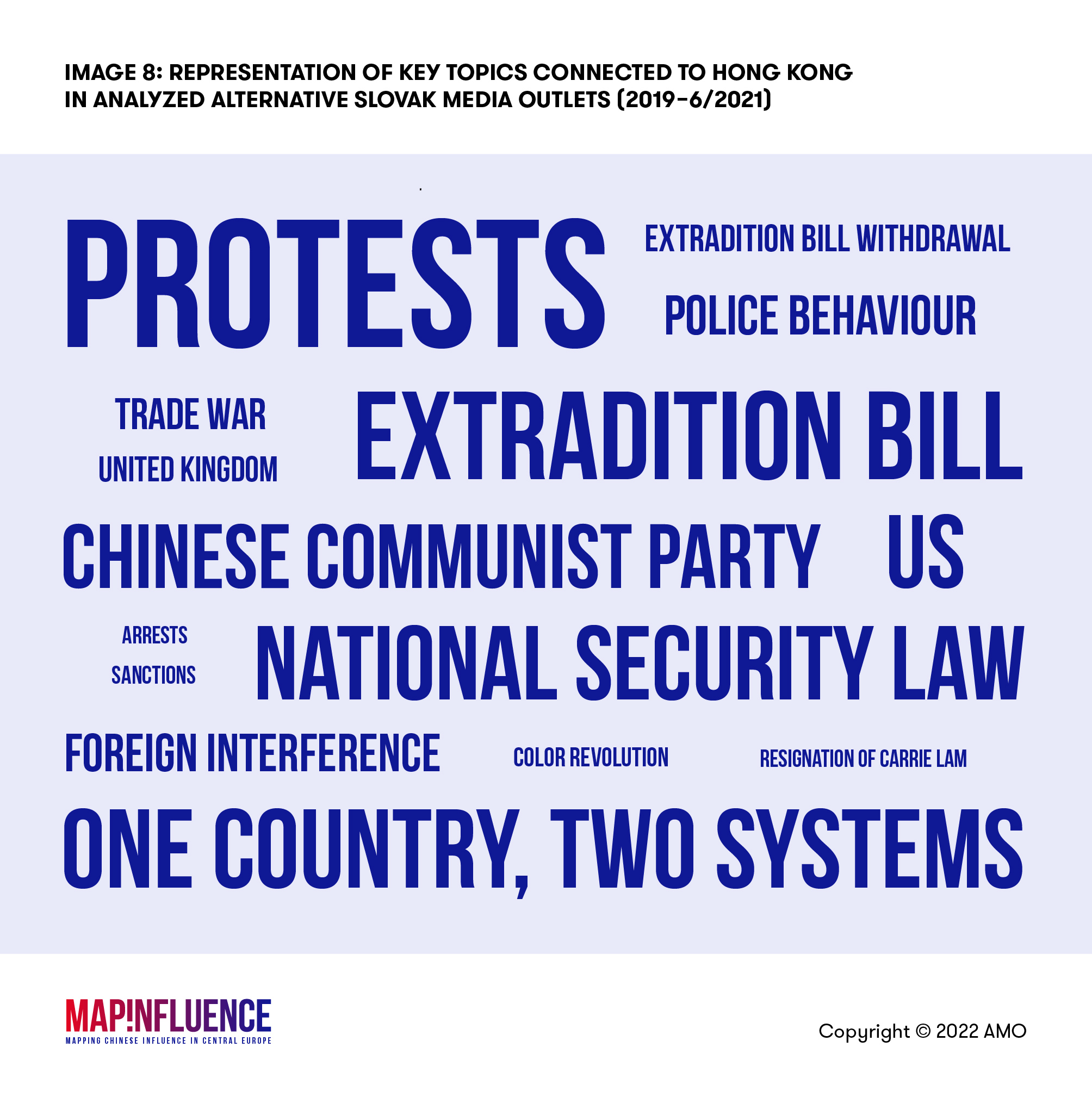
The media coverage of the Xinjiang issue during the monitored period primarily focused on questions related to human rights violations and how this permeates into US-China relations. Overall, the coverage demonstrated little intricate analysis of the topic but rather focused on factual reports, most likely due to the low profile of the issue in Slovakia.
While at the beginning of the monitored period, the coverage largely focused on the reporting of what is happening in Xinjiang, reports of detention camps, and the Uyghur minority, the coverage gradually shifted towards framing the issue as a part of the Sino-US rivalry. Indeed, as the time proceeded, and the US began to mention potential sanctions for Beijing’s conduct in Xinjiang, articles often referred to the trade war, the US blacklist, and the Chinese tech companies such as Huawei and ZTE. Some articles eventually mentioned the Xinjiang issue only in passing while focusing on wider US-China tensions.
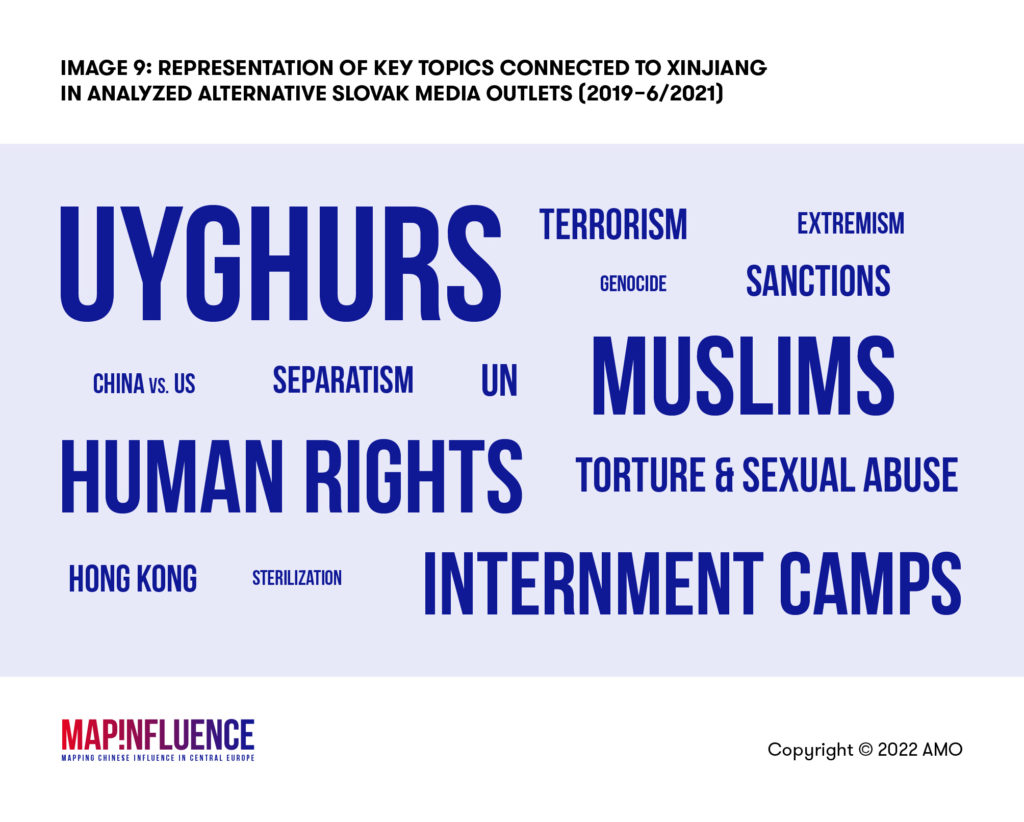
The discussions on China and Taiwan in the alternative media focused largely on the discussions of Taiwanese independence, the One-China policy, military buildup in the Taiwan Strait, as well as on the two entities’ relations with the US. With a few exceptions, almost all the analyzed articles included at least a rudimentary discussion of the ‘One-China Principle’ and China-Taiwan relations.
Coronavirus was another prominent topic discussed in articles dealing with China and Taiwan. Most of the articles discussed the prospects of Taiwan’s membership/participation in the World Health Organization (WHO) and China’s opposition to it, as well as Taiwan’s initial communication with the WHO at the beginning of the new coronavirus outbreak.
